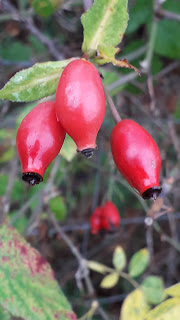Holly blue (Celastrina argiolus) -- Butterfly Conservation undertake the Big Butterfly Count every summer, between July and August. (Photo from personal collection)
It has been a while since I last produced a post for this blog -- just over five months, to be exact -- because I have been focusing my efforts in other directions. Exploring other options for my passionate pursuits in nature and writing. But I thought that I would come back to this space to compile a brief list of just some citizen science projects that UK residents can be a part of throughout the year.
Citizen science projects are valuable for collecting data about habitats and populations around the country, and allows the relevant organisations to adapt their plans and actions, as they strive to protect and conserve various components of the natural world, with the evolving ecological landscape.
So, without further ado, and in no particular order, here is that compilation of those citizen science projects for naturalists all over the UK to get involved with.
The Big Butterfly Count
Butterfly Conservation, whose mission is to save butterflies, moths, and our environment, runs The Big Butterfly Count every year. In 2023, the count begins Friday 14th July and runs until Sunday 6th August.
To take part, all you need do is find a sunny place to spot butterflies and moths, watch for fifteen minutes, and record what you see. Then add your count through the website.
You can check the numbers spotted by others around the country on the website's interactive map.
There is more than a month yet until the count gets started, but you can check out the website here, where you can download their helpful ID chart to familiarise yourself with common species of butterfly and moth.
Butterfly Conservation is worth taking a look at for identifying other butterflies and moths, tips on helping butterflies and moths, and other monitoring projects.
The Big Hedgehog Map
British wildlife is in trouble. According to the first Red List of UK mammals, 2020, a quarter of native mammals are at risk of extinction in the United Kingdom.
The hedgehog, with declines estimated between 30% -- 75% in the last couple of decades. Once familiar, the spiky mammal is facing a number of threats, which makes protecting the species difficult.
With an increasing trend towards fencing which fragments their roaming territory, pesticides and poisons which introduce fatal toxins into their diet, and road casualties, amongst other issues, the British hedgehog is facing a myriad of external threats.
Collecting and collating data, plotting out where hedgehogs are, where they are doing well, and where they are not, allows for better a understanding of hedgehogs, the adversities to which they have been able to adapt better, and in which areas they need help.
Part of Hedgehog Street, a national campaign to save hedgehogs by the People's Trust for Endangered Species (PTES) and British Hedgehog Preservation Society, you can find the map here for further information and taking part yourself.
Water vole survey
Another fast declining mammal -- the fastest declining -- in the UK is the water vole, and the PTES has been running a survey, with the help of citizen scientists throughout the UK, to collect data on this rodent (Arvicola amphibius).
Under threat from habitat loss and predation from the invasive American mink, water voles are in serious trouble.
As with many other projects, the focus here is to collect data that will inform the planning and actions taken to protect the species.
You can find more information on the project and related topics here.
Woodland Trust Ancient Tree Inventory
The Ancient Tree Inventory is an ongoing project run by the Woodland Trust to map where in the United Kingdom ancient, veteran, and notable trees are located. The purpose of this project is to collect together where these trees live in the country, to gather information about them, so that they might be better protected for today and for tomorrow.
The Woodland Trust seeks better information about these trees, and better protections for them. They ask that these trees enjoy protections comparable to those given to old buildings and works of art.
You can see the interactive map and record notable, ancient, and veteran trees here.
The Big River Watch
Conservationists and naturalists love a big watch!
The Rivers Trust is running its own big watch in September 2023. Their hope is to gather data which will build up a picture of river health across the country.
As well as benefitting our natural world, many of these projects also give the perfect reason (if you need one) to interact with the more wild parts of our country. For this one, again participants are asked to pick a location, this time beside a river, and record observations.
There is plenty of time to prepare for this project, but you can take a look at the survey here.
Please note, this is far from an exhaustive list!
Check out what other conservation charities and non-profit organisations are doing, and how you can help, through their websites. And, if you think there is citizen science project worth taking part in, please do make a mention of it in the comments -- spread the word!
Disclaimer: the writer of this blog currently makes a monthly donation to The Woodland Trust and has supported campaigns by other charities and non-profits by signing and sharing petitions, making donations, taking part in citizen science projects, and a handful of other similar efforts. However, he is in no other way affiliated with these organisations.












